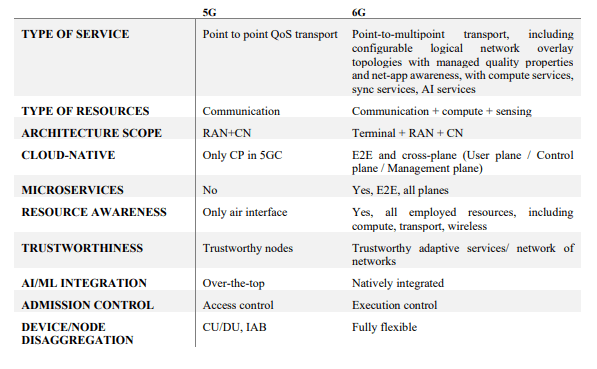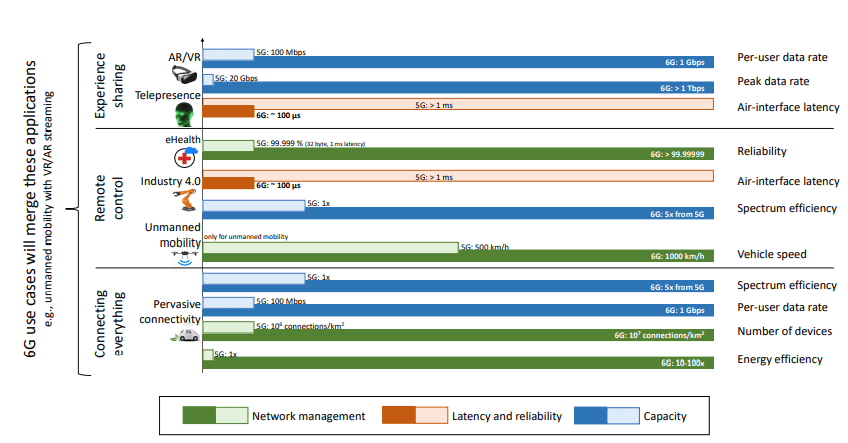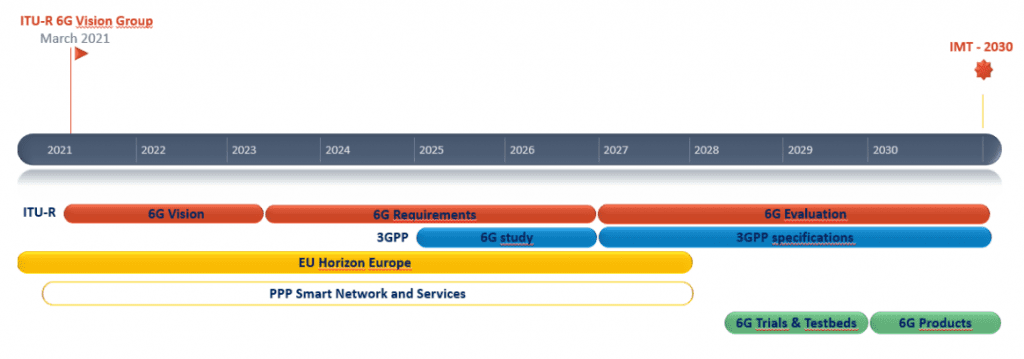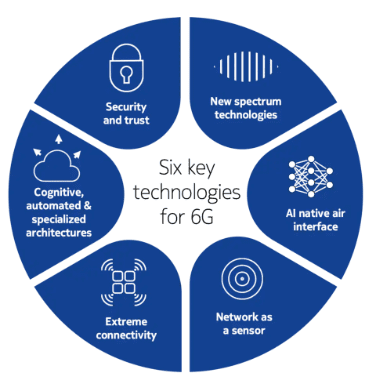In 2020, 6G’s research and development (R&D) efforts really got going. Ericsson, one of the world’s largest 5G equipment manufacturers, speculated that early standards for “6G Basic” technology could be released in 2027. In 2030, 6G internet is anticipated to go on sale. To boost capacity, reduce latency, and enhance spectrum sharing, the technology makes better use of the terahertz (THz) spectrum and distributed radio access network (RAN).
How Does 6G Work?
Because it doesn’t exist, we don’t know. There are, however, certain concepts that are beginning to circulate that offer a possible solution.
Ultra-high frequency data transmission is a major focus of 6G research. Although 5G does not currently use any frequencies above 39GHz, in principle, it can operate up to roughly 100GHz. For 6G, researchers are working to figure out how to transfer data using waves in the terahertz (THz) or hundreds of GHz range. Although these waves are quite small and delicate, the vast quantity of unoccupied spectrum in the upper atmosphere would permit astounding data speeds.
We lack semiconductor materials that can operate at several THz. It might need massive arrays of tiny antennas to get any range out of those frequencies. Researchers will need to create models that allow data to go via extremely convoluted paths in order to overcome the effects of water vapour in the environment, which scatters and reflects THz signals.
Current wireless systems only let you transmit or receive on any given frequency at once. You can partition your channels by frequency (FDD) or by setting up timeslots (TDD) to enable two-way communication. Finding a solution to simultaneously send and receive in the same frequency using extremely complex calculations could increase the efficiency of the available spectrum by two times (and be totally incompatible with existing networks). Many bright individuals are working hard to figure out how to do this even though no one understands how to do it yet.
Although 5G is still primarily a hub-and-spoke system in which end-user devices (phones) connect to base stations (cell towers) that connect to a backbone, mesh networking has been a hot issue in many networking circles for years. Perhaps 6G will allow gadgets to act as data boosters for one another, allowing each device to both use and extend coverage.
Split computing is a 5G innovation, but 6G might make it much more effective. Data transfer speed between devices is referred to as latency. The lower the latency, the more your mobile phone can rely on split computing, in which some data is processed locally, and some is processed elsewhere and transmitted. This is crucial for applications that provide your device a continuous stream of sophisticated information because a device you hold in your hand can never be as powerful as the supercomputers in the cloud.
The goal of 6G is to achieve latency below 1ms, which will call for a tonne of other technology advancements but may enable some really cool split computing applications. For instance, you might have augmented-reality glasses that send information about what you see—for instance, a fantastic piece of street art—to the cloud and get it in real time, without any local processing, along with details on the artist or even a video of the mural being painted.
A white paper from the University of Oulu suggests that a new version of the Internet Protocol (IP) may also be necessary. The Internet’s structure as a whole would change as a result. The paper describes a current IP packet as being like a first-class letter, with an addressed envelope and some sheets of text; a “new IP” packet would be like a FedEx package that includes routing and priority `-information.
These things all go together. Mesh networking, for instance, might be able to solve issues brought on by terahertz signals’ limited range. A short-distance technology can operate over a much wider area if your data can hop from your phone to someone’s coat, a car on the street, a lamppost, and finally to a base station.
6G Architecture
To transit away from the single-client-single-server model, 5G communication started implementing the Internet principle of service-oriented architecture (SOA). At the application- and network-service level, many internet services have also transitioned from being monolithic to collaborating microservices, and the deployment of services has evolved from dedicated server hardware to virtualization on cloud infrastructure. This method, however, was restricted to the control plane, the core network (CN), and the management plane with a service-based management architecture (SBMA), rather than going all the way to an end-to-end service-based architecture (SBA), and it continued to rely on specialised hardware running logically distinct radio access network (RAN) nodes. With 6G, it is anticipated that the SBA will be able to extend throughout the entire network, across all planes, and from end to end, including CN, RAN, and terminals. This will enable much greater operational and deployment flexibility, support network-of-networks concepts, and make subsystem integration and scalability easier.










